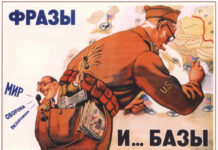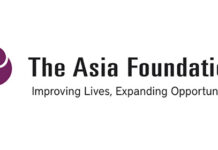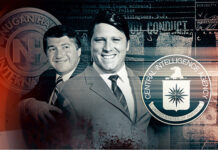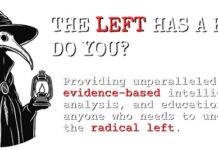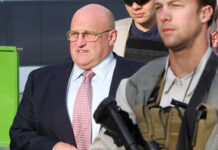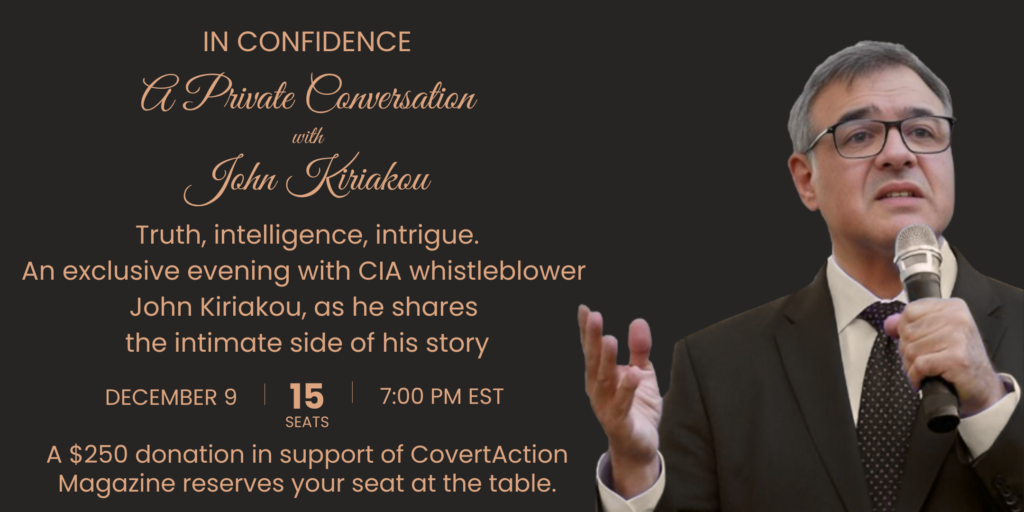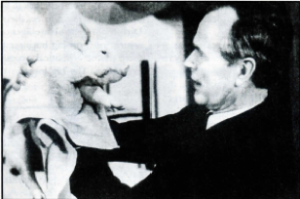
[George H. W. Bush was the Director of the CIA from 1976 to 1977, Vice-President under the Reagan Administration in the 1980s, and President from 1989 to 1993. As the country moves to posthumously honor him, CAM brings you this article from our Archives–a flashback we will provide from time to time–on Bush Sr. published by Anthony L Kimery in 1992 (CAQ #41). Kimery, a free-lance investigative journalist, provides this in-depth exposé of Bush’s covert-related activities. Hard-hitting facts and well-footnoted, the article demonstrates the kind of hidden manipulation of corporate and geopolitical interests through hands-on decision-making and networking at the highest levels.—Editors]
“I don’t think there’s ever been a vice president… as much involved at the highest level in our policy-making and our decisions than George,” said President Reagan in March 1985.1 At the 1988 Republican national convention, in response to the Democrats’ taunt, “Where was George,” during Iran-Contra, Reagan said, “George played a major role in everything we’ve accomplished …. George was there.”
Bush’s most important contribution was to national security policy, a role for which he was uniquely qualified. Recipient of his own special daily CIA/national security briefings, he was a prominent, some say guiding, member of the National Security Council (NSC) – home to most of the Iran-Contra plotting and off-the-shelf secret operations. He also chaired crucial sub-national security policy groups which gave birth to Iran-Contra’s more heinous rogueries.2 The question raised by all this access and intimacy is not so much how integral Bush was formulating and carrying out the national security policies that allowed for crimes such as Iran-Contra. Rather, the question that needs to be answered is why he is such an important player at all.
On the surface, Bush’s rise within policy and intelligence circles-from a moderately successful Texas businessman to moderately successful political player, to director of the CIA, to an unusually involved vice president—seems unlikely.
If, however, he had a longer, more intimate relationship with the CIA than the public record indicates, much about Bush’s spectacular career would be explained. While not conclusive, there is a growing body of evidence that for almost half a century, Bush has been a Company man. That evidence is worth examining.
The Early Years: Waltzing with Spooks
Bush’s most important ties to the intelligence community were likely knotted at Yale, which he attended from 1945 to 1948. During these formative years for both Bush and the Cold War, the CIA recruited vigorously and almost exclusively at the elite Ivy.3 Yale was so intimately intertwined with the U.S. spy community that it “influenced the CIA more than any other institution,” wrote historian Robin W. Winks.4 All the recruits did not enter the Agency itself. Many Yale graduates going to work for multinational corporations were routinely recruited to provide intelligence, particularly from behind the Iron Curtain.
The CIA’s full-time salaried headhunter at Yale was crew coach Allen “Skip” Waltz, a former naval intelligence officer who had a good view of Bush.5 As a member of Yale’s Undergraduate Athletic Association and Undergraduate Board of Deacons, Bush had to have worked closely with Waltz on the university’s athletic programs from which the coach picked most of the men he steered to the CIA. It is inconceivable Waltz didn’t try to recruit Bush, say former Agency officials recruited at Yale.6
But it wasn’t just Bush’s scholastic achievements that made him desirable as a prospective spy. His father, Prescott, Sr., probably also had a part in the CIA’s interest in young George.7 A managing partner of Brown Brothers Harriman and major benefactor of Yale, Prescott had been an Army Intelligence operative in World War I. He also ardently supported Eisenhower’s covert Cold War policies and was a close friend of William Casey, an OSS veteran who went on to head the CIA from 1981 until his death in 1987. Given these connections, it was not surprising that the job awaiting his son upon graduation in 1948 was with a CIA-linked company headed by a close friend who was also on good terms with top people in the Agency.
Oiling the Company Machine
Bush started his career as a salesman for International Derrick and Equipment Company (IDECO), a subsidiary of Houston-based Dresser Industries. This global engineering and construction conglomerate had routinely served as a CIA cover.8 Bush’s job, peddling IDECO’s services, including behind the Iron Curtain, was a curious responsibility, considering Bush’s inexperience in either the oil industry or international relations.
Dresser Industries, longtime Chairman of the Board Henry Neil Mallon, the “surrogate uncle” and “father-confessor” to Prescott’s children, personally offered Bush the IDECO job.9 Mallon was a friend to numerous ranking Cold War era intelligence officials, including Allen Dulles—an OSS veteran and ground floor official of the CIA. (Dulles headed the Agency from 1953 until 1961 when he was sacked by President Kennedy in the wake of the Bay of Pigs disaster.) Mallon steered prospective candidates for spy work to Dulles and often provided cover employment to CIA operatives.10 Prescott and Mallon were also Yale classmates and initiates of Skull and Bones, the infamous secret Yale fraternity that was a fertile CIA recruiting ground during the Cold War .11 George joined Skull and Bones his junior year.
Among the meticulous pages of the address book the Count carried until his alleged suicide, is an entry for “George Bush.”
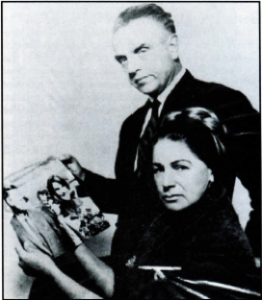
Another particularly important operative with whom Mallon was well acquainted would also eventually work with George Bush. George DeMohrenschildt, a Russian Count whose family fled Russia after the Bolshevik revolution, had been part of a spy network Dulles ran inside Hitler’s intelligence organization.12
Following the defeat of Nazi Germany, DeMohrenschildt appears to have been submerged as a deep cover CIA “asset,” operating under the guise of a consulting petroleum geologist specializing in making deals between U.S. oil companies and the East-bloc nations to which he was remarkably well-connected.13 Mallon personally introduced the Count to Bush at about the same time Mallon handed Bush the highly sensitive responsibility of negotiating East-bloc deals. The officials with whom Bush dealt had detailed knowledge of Soviet-bloc oil and gas production and exploration and drilling capabilities, as well as strategic exploration and production plans outside the USSR. Bush convivially wheeled and dealed with the communists’ petroleum experts without the slightest grimace by U.S. authorities. In fact, when a Yugoslavian oil industry official came to the U.S. in 1948 to talk to Dresser Industries, the State Department barely flinched and he went straight to neophyte salesman George Bush in Midland, Texas.14
“It’s inconceivable then that the CIA didn’t debrief Bush after each and every meeting [he had with the East’s representatives].” -Victor Marchetti, former CIA officer.
Driven by a Cold War policy of covertly thwarting expansion of the Soviet petroleum industry wherever possible, the CIA was desperate for accurate intelligence on the USSR’s oil and gas production activities. “It’s inconceivable then that the CIA didn’t debrief Bush after each and every meeting [he had with the East’s representatives],” explained Victor Marchetti, a former ranking CIA officer and Soviet specialist were routinely debriefed,” Marchetti said.15
For decades, the CIA relied heavily on debriefings of U.S. businesspeople–some of whom were turned into full-fledged agents–for valuable intelligence tidbits. That Bush was one of those recruited to spy, is a possibility Marchetti and other ex-CIA officials find consistent with the normal Company functioning. And it would certainly go far in explaining Bush’s relationship with the mysterious Count DeMohrenschildt. A degreed petroleum geologist, the Count could have explained precisely what information Bush needed to look for to help the CIA fill its intelligence gaps. Later a CIA spy in Yugoslavia, DeMohrenschildt may have been Bush’s “handler” – his briefer and debriefer. “Bush had all the characteristics of being a spook,” said a retired CIA operative who says be worked for Dresser as a cover and who knew the future president.16
The possibility that deep cover operative DeMohrenschildt’s relationship to Bush was that of fellow intelligence gatherer is further strengthened by DeMohrenschildt’s continuing association with Bush, and by the apparently secret turn in their relationship at about the time CIA operations against Fidel Castro began.
Neatly typewritten among the meticulous pages of the telephone and address book the Count carried with him until his alleged suicide, is an entry for “George Bush.”
It includes his nickname, “Poppy,” and his home address and telephone number in Midland, Texas, where Bush and his family lived from 1953 until he moved the offices of Zapata Off-Shore Oil Company to Houston in 1959. Curiously, the two of them continued to meet secretly in Houston.17 DeMohrenschildt made no new entry for Bush’s residence in Houston. There was only an “X” marked through the old address.18 In his testimony to the Warren Commission, DeMohrenschildt acknowledged having made frequent trips to Houston beginning in the late 1950s for which he gave only vague explanations.19 Although there is no proof, it is possible that one reason for his stealth was the continued meetings with Bush. By the early 1960s, Bush was regularly servicing the CIA in Latin America. “I know [Bush] was involved [with the CIA) in the Caribbean,” said an ex-CIA agent.20
Zapata Zaps Mexico
It was around this time, in the late 1950s, that Bush expanded his business dealings in Mexico. The counterrevolutionary, anti-nationalization policies enforced by the CIA in the incendiary Mexico-Caribbean-Central America region certainly worked to Bush’s financial advantage. Following Castro’s successful revolution in 1959, his government took over all oil and gas enterprises in Cuba and nationalized the industry–a blow to U.S. oil companies which had just begun to tap into Cuba’s oil reservoirs.21
Fearing that the desire to control their own industries would spread to other Third World countries, the CIA went to bat for big oil amalgamations which were worried about the security of their investments in the region’s considerable oil and natural gas resources. The Agency began assembling a paramilitary force to invade Cuba and overthrow Castro. Again, there was a neat mesh between CIA policy objectives and Bush business interests in the region. In the summer of 1959, Bush was principal owner of Zapata Off-Shore Oil Company, which he had spun off from Zapata Petroleum-a company he helped found six years earlier.
Veteran CIA operatives in the war against Castro say Bush not only let the CIA use Zapata as a front for running some of its operations (including the use of several offshore drilling platforms), but assert that Bush personally served as a conduit through which the Agency disbursed money for contracted services. 22
Lending themselves this way to the CIA was a classical segue for many businesspeople in the 1950s and early 1960s who had wet their feet spying for the CIA behind the Iron Curtain. The Agency recruited scores of conservative businesspeople to volunteer their companies as “fronts” for hiding the impending invasion against Castro.23
A number of veteran Cold Warriors, none of whom knows one another, are adamant in their respective claims that Bush worked for the Agency during this period. They tell similar disturbing stories about Bush having dirtied his hands “doing the Company’s bidding,” as one put it. This allegation is buttressed by the internal records of a secret alumnus of former back alley operations who confirms that contract mercenaries were indeed employed by Zapata.24
PEMEX: Oiling the CIA and Greasing Bush’s Palm
The Agency-industry fear–that they might lose control of oil reserves in their “backyard”–was well-founded. On the heels of Castro’s nationalization, Mexico, a country of more strategic and economic importance to the U.S. than Cuba, also moved to nationalize its oil industry. Concurrently, Mexico embarked on a massive economic expansion program which relied heavily on wooing foreign credits. One country which offered tantalizing loans and oil drilling expertise was the Soviet Union.25 The CIA was concerned that the Soviets would establish a foothold in Mexico’s oil industry. The U.S. oilmen were worried that they would lose their profitable domination of Mexico’s oil industry and, unable to stop the nationalization, they rushed in to snare lucrative business arrangements with PEMEX, Mexico’s new state-owned oil monopoly.

While most bid overtly for contracts, some oilmen worked closely with the large Mexico City CIA station. One corporation which benefited from the considerable leverage the CIA held over certain Mexican officials running PEMEX, was Bush’s Zapata Off-Shore Oil Company. By 1960, Agency assets had helped Bush erect the foundation for a secret and illegal oil drilling partnership on Mexican soil.26 In 1959, working through high-level officials of Dresser Industries, Bush teamed up with ranking Mexican officials whose offices were cooperating closely with the CIA Chief of Station in Mexico City. The office of Minister of Government Luis Echeverria Alvarez, which oversaw Mexico’s oil interests and supervised the Directorate of Federal Security (his country’s equivalent of the CIA) was particularly helpful. In the summer of 1959, circumventing Mexican laws requiring drilling contracts be held by Mexican nationals, Bush and his Mexican front men created Permargo Company.27
Although on paper the company appeared to be Mexican-owned, Bush and his associates camouflaged Zapata’s 50 percent ownership of Permargo. The company, which pioneered in deploying mobile deep sea oil drilling platforms, was virtually alone in the Caribbean Sea and off the shores of South America.28
Bush engineered the deal without telling any Zapata Off-Shore stockholders.29 He worked through Jorge Diaz Serrano, a prominent citizen many Mexicans believed would be their country’s next president. Less known were his close ties to the CIA’s station in Mexico City.30 Diaz Serrano went on to take control of Permargo when Bush was elected to Congress in 1966. Ten years later Diaz Serrano, too, appeared to give up his interest in Permargo when he moved into a government job-head of PEMEX. In fact, he maintained his financial interest in Permargo and established a cozy and profitable relationship for PEMEX with the CIA and U.S. oil companies. After his high-profile incompetence and corruption were exposed, Diaz Serrano was charged with overseeing the theft of billions of dollars in oil and cash and was convicted in 1983 of defrauding the Mexican government of $58 million. Sentenced to ten years, he was released after five.31
At that point, U.S. relations with the increasingly anti-U.S. Mexican government and, consequently, with PEMEX, deteriorated rapidly, destroying the good relations Bush had cultivated when he led the CIA in 1976. 32
Naming Names
Were it not for the inadvertent discovery of a now nearly 30-year-old document that names “George Bush” as a CIA employee, these ex-spooks’ stories would be nothing more than just that–stories. But it is precisely because of these tales that an official document indicating Bush worked for the CIA cannot be ignored. The smoking paper was among the nearly 100,000 pages of FBI documents on Kennedy’s assassination that the FBI released in 1977 and 1978 in response to lawsuits under the Freedom of Information Act. It sat undiscovered for almost a decade until author Joseph McBride stumbled across it and reported its existence in the The Nation in July 1988.33
On November 29, 1963, FBI Director J. Edgar Hoover wrote to the director of the State Department’s Bureau of Intelligence and Research (whose staff traditionally included CIA officers). The document summarized oral briefings given on the day after Kennedy’s murder to “Mr. George Bush of the Central Intelligence Agency and Captain William Edwards of the Defense Intelligence Agency by Mr. W. T. Forsyth of the Bureau.” It responded to State Department concern that “some misguided anti-Castro group might capitalize on the present situation and undertake an unauthorized raid against Cuba, believing that the assassination of President John F. Kennedy might herald a change in U.S. policy,” Hoover wrote.34 But it wasn’t just the State Department which was concerned. The CIA had reason to be worried that rogue Cuban exile-supported operations might expose or impair its anti-Castro covert actions, which continued despite the Bay of Pigs disaster.
The document summarized oral briefings given to “Mr. George Bush of the Central Intelligence Agency and Captain William Edwards of the Defense Intelligence Agency by Mr. W. T. Forsyth of the Bureau.”
With the election only three months away, the longstanding Capitol Hill cloakroom rumor that Bush was a CIA “asset” suddenly gained credibility when The Nation story hit the streets. Evidence that the Republican candidate–whose relationship to the CIA’s illegal arms pipeline to the Contras as Vice President was already controversial–had in fact been a CIA operative, should have sparked a political firestorm. Oddly, the furor was short-lived. Pressed by The Nation for a comment prior to publication, Bush laughed, shrugged his shoulders, and, according to a White House insider, told his spokesperson Stephen Hart to tell The Nation that it “must be another George Bush.”35
When asked whether the CIA could check to see if, as Bush suggested, there had been another George Bush roaming the Langley corridors at the time, spokesperson Bill Devine replied, “Twenty-seven years ago? I doubt that very much [that we can search back). In any event, we just have a standard policy of not confirming that anyone is involved with the CIA.”36
When The Nation report failed to die a quick, natural death, the CIA reversed its standard policy a few days later and announced–because “the record should be clarified”–that it had identified the “George Bush” referred to in Hoover’s memo. Indeed, a George William Bush was employed by the CIA at the time in question, and it was he to whom Hoover had referred. CIA spokesperson Sharron Basso added that George William Bush left the Agency in 1964 and his whereabouts were unknown. Another Agency official told the New York Times that “we put a lot of effort into [identifying the man Hoover named].”37
Apparently, they didn’t try hard enough. George William Bush was found working for the Social Security Administration and living in Alexandria, Virginia, only a short distance from CIA headquarters. When read the memo, he responded: “Is that the other George Bush?” It was a logical assumption; George William Bush had heard that another George Bush worked for the CIA at the same time he had been “a lowly researcher and analyst.” In a sworn affidavit, George William acknowledged working for the CIA at the time Kennedy was killed, but affirmed: “I am not the Mr. George Bush of the Central Intelligence Agency referred to in the memorandum.”38
So, according to George William Bush, there was another George Bush working for the CIA when Kennedy was killed. The CIA won’t comment, and the White House won’t “give dignity to this matter with any additional comments. President Bush settled this in 1988 with his denial.”39
That’s pretty much the sort of imperious denial Bush gave to the recurring and unanswered questions about his role in the Iran-Contra mess. In that case, too, the apparent Bush-CIA connections go back decades. There is evidence that prior to Bush’s appointment as DCI in 1976, he was well-acquainted with legendary spook Theodore George “Ted” Shackley who joined the Agency in 1951. When Bush arrived on the scene at Langley, it was clear to longtime Agency insiders that there was a bond between these two men that went back many years.40
Between 1974 and 1976, a sensitive period in U.S.Chinese relations, Bush was Ambassador in Beijing and Shackley was chief of the CIA’s Far East Division. In 1976, shortly after he became DCI, without seeking advice, Bush promoted Shackley to Associate Deputy Director of Operations. In this position, he was second in command to the DDO -the third most powerful position in the CIA and one of the most pivotal in the entire government.
Aside from their Agency connection, already cemented during Bush’s previous tenure in Beijing, it is hard to explain how the two men developed such a close bond.
For the previous 10 years, Shackley was Chief of Station in Vientiane and Saigon overseeing dozens of covert operations related to the Vietnam War. Before that, from 1952-59 and again during 1965-66, he worked in Germany.
In 1962, before going into the jungles of Indochina, he returned for a three-year stint stateside as Station Chief in Miami–then the largest CIA station in the world and the base of operations for the Agency’s vast paramilitary operations against Castro following the Bay of Pigs disaster. “You’ve got ole George baby helping the Company’s operation against Castro and here’s Shackley in charge of the Miami station that’s running that show. Now how do you think they know each other my friend?” mused a former CIA operative involved in the anti-Castro activities. “Theirs was a damn close relationship–still is.”41
Under Bush’s tenure as DCI at the CIA, the two men worked together. Shackley oversaw Central America operations and established the infrastructure for the Reagan White House’s adventures a short time later.42 The veteran agent was not only the catalyst for the notion of selling arms to Iran to free the hostages, but he was also one of the architects of “low-intensity conflict,” the new name for the CIA’s covert strategy in Central America.43 Shackley was eventually forced out of the Agency in 1979 when an arms sales scandal involving him finally exploded. His relationship with Bush continued, and shorn of official CIA status, Shackley re-emerged in the early 1980s as an integral player in Iran-Contra. Throughout the early stages of those operations, Bush reportedly met with Shackley at Shackley’s office in downtown Arlington.44
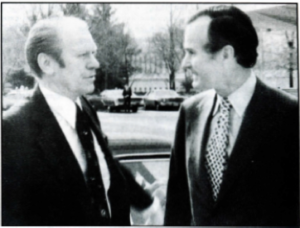
Skeletons In the Closet
Without question, President Gerald Ford’s nomination of Bush to head the CIA was a departure from precedent which some members of the House and Senate intelligence committees and their staffs greeted with suspicion. The public objection was that Bush was a partisan politician who would politicize the office. The objection whispered behind closed doors, by those who had heard that Zapata had been an Agency cover during the days of the CIA’s anti-Castro exploits, was that Bush was an agent with a past to hide. A man with skeletons in his closet might be a dangerous choice to guard the nation’s own collection of loudly rattling bones.45 The Church Committee and Watergate had already cracked open the CIA door too far for some and exposed the relationship of the Watergate burglars to the Agency’s anti-Castro activities, including several assassination attempts on Castro. Perhaps, however, some of Bush’s supporters thought that someone who had successfully concealed his own past might be the perfect person for the job.
The appointment of Bush as Director of Central Intelligence also coincided with the Senate Intelligence Committee probe of Oswald’s and Jack Ruby’s connections to Cuba, the CIA, and the mob. With his own ties to those operations, Bush was now in charge of what the CIA would and wouldn’t divulge. As DCI, he frustrated committee investigators’ requests for specific information in the Agency’s files on Oswald and Ruby and downplayed revelations about CIA involvement. Memoranda written by Bush on the intelligence committee’s investigation of Oswald’s and Ruby’s links to the CIA and organized crime show he was especially interested in the committee’s probing not only of what the CIA knew about the events in Dallas and didn’t report to the Warren Commission, but to what extent, if any, the Agency was complicit in Kennedy’s murder.46 Clearly, as DCI, Bush knew the Agency had hidden, and was still hiding, crucial information which contradicted the Warren Commission’s verdict. Yet, in the wake of the furor over the movie JFK, Bush commented: “I have seen no evidence that has given me any reason to believe the Warren Commission was wrong.”47
“Bush was worried about something during those investigations when he was DCI, all right. He was worried it was going to be found out that he worked for the Company and was tied right into all the messes the CIA was in during the late 50s and early 60s,” said “Chuck,” an ex-CIA contractor and Bay of Pigs veteran who claims to have personally dealt with Bush with respect to the CIA’s efforts to overthrow Castro.48
Government employees are usually pensioned off after 20 years. Strong evidence points to a 45-year record of loyal service by George Bush to the Central Intelligence Agency. A rest is long overdue.

- Jack W. Germond and Jules Witcover, Whose Broad Stripes and Bright Stars (New York: Warner Books, 1989), pp. 67, 381.
- Chair of the Task Force on Combatting Terrorism, which dealt regularly with North and Casey; member of NSC; member of National Security Planning Group; Chair of Special Situations Group, whose subCrisis Pre-Planning Group conceived of the illegal quid pro quo with Honduras. (NSC and White House documents declassified for North’s trial.)
- Robin W. Winks, Cloak and Gown: Scholars in the Secret War, 1939-1961 (New York: William Morrow, 1987), Chapter 1.
- lbid., p. 35.
- lbid., pp. 51-54.
- Consensus of several former senior CIA officials who are familiar with the Agency’s recruiting practices and procedures. Interviews in 1990-91.
- Author’s interviews with a number of former CIA officials and operatives, 1990-91.
- Author’s interviews in 1990-91 with two individuals who were CIA Operations Directorate field officers at the time, one of whom knew Bush and claims to have worked for Dresser as his cover.
- Donnie Radcliffe, Simply Barbara Bush: A Portrait of America’s Candid First Lady, (New York- Warner Books, 1989), pp. 103-4; and Nicholas King, George Bush: A Biography (New York: Dodd-Mead, 1980), p. 43.
- March 25, 1953, letter from Prescott Bush to President Eisenhower’s national security adviser.
- Howard Frazier, ed., Uncloaking the CIA (New York: The Free Press, 1978), p. 148.
- DeMohrenschildt, better known as Lee Haivey Oswald’s best friend, allegedly killed himself on March 29, 1977, after learning that the House Select Committee on Assassinations had sent investigator Gaeton Fonzi to talk to him. Fonzi wanted to interview the Count about omissions in his 1964 testimony to the Warren Commission. (DeMohrenschildt’s Warren Commission testimony: Vol. 11, pp. 134-35, 138, Commission Exhibits 1403, 1667, 3100, 3116; and author’s interview with former senior CIA Operations Directorate officials, 1990-91.)
- Anthony Summers, Conspiracy (New York: McGraw Hill, 1981 ), pp. 222-28, 248-49; Robert Groden and Harrison Livingstone, High Treason, The Assassination of President Kennedy: What Really Happened (New York: Berkeley, 1990), pp. 299-305. Volumes I-IV; DeMohrenschildt testimony before Warren Commission, op. cit.
- Richard Ben Cramer, “How He Got Here,” Esquire, June 1991, pp. 128-34; and King, op. cit., pp. 47-51.
- Author’s interview, 1991.
- Author’s interview, 1989.
- Author’s interviews with several former senior CIA Operations Directorate officials, 1990-91.
- DeMohrenschildt’s address book.
- Warren Commission testimony, op. cit.
- Joseph McBride, “George Bush, CIA Operative,” The Nation, July 16-23, 1988, pp. 41-42.
- DeMohrenschildt was very well connected to oil executives linked to the intelligence community, such as Jean de Menil, president of the Schlumberger Company, through which ammunition was funneled to the anti-Castro Cubans employed by the CIA. Jim Garrison, On The Trail of the Assassins: My Investigation and Prosecution of the Murder of President Kennedy (New York: Warner, 1990), pp. 45, 61,209′, 367.
- Author’s interviews with several former senior CIA Operations Directorate officials, 1990-91.
- Warren Hinckle and William Turner, The Fish is Red: The Story of the Secret War Against Castro (New York: Harper and Row, 1981).
- American Legion Generals Ward and Chennault China Post No. 1 internal papers and membership lists; and author’s interviews with several former senior CIA Operations Directorate officials, 1990-91.
- “PEMEX Booming Bureau With Big Plans,” Oil And Gas Journal, March 21, 1960, pp. 91-2; “Pemex Plans Careful Drilling Program for Northeast Mexico,” Oil and Gas Journal, March 30, 1960, pp. 134-35.
- Meanwhile, Bush’s friend, George DeMohrenschildt, also was in the middle of the CIA’s scheme to ensure that U.S. oil companies had the advantage in Mexico and that U.S. dominance was not jeopardized by the Soviets. DeMohrenschildt wined and dined PEMEX officials on behalf of Texas Eastern Corporation, a subsidiary of the Houston-based Brown & Root Company, a multinational engineering, construction, and oil conglomerate that had a lucrative natural gas contract with Mexico. Like Dresser, Brown & Root had also long served as a cover for the CIA, and was part of the powerful oil clique which would later throw money at the political ambitions of Richard Nixon and George Bush. (Author’s interviews with several former CIA Operations Directorate officials, 1990-91; and DeMohrenschildt’s Warren Commission testimony, op. cit.)
- Details on Mexico City CIA station: Philip Agee, Inside the Company: CIA Diary (New York Stonehill, 1975); on Bush’s involvement in creating Permargo: Jonathan Kwitny, “The Mexican Connection: A Look at an Old George Bush Business Venture,” Barron’s, September 19, 1988, pp. 8-9, 28.
- “Why Zapata Is Working in Foreign Waters,” Oil and Gas Journal, Februaiy 15, 1960, pp. 66-7.
- Kwitny, op. cit.
- Author’s interviews with several former senior CIA Operations Directorate officials, 1990-91.
- Kwitny, op. cit., p. 28.
- Bush had joined the CIA at about the same time as Diaz Serrano took over PEMEX. Before Bush left the Agency, assets working for Dresser had undertaken clandestine talks with Mexican officials in an effort to reinforce the good working relationship. (Private investigative report in author’s possession; Guillermo X. Garcia and D. Weyerman, “DPS Agent’s Killer Claims Entrapment,” Arizona Daily Star, April 13, 1984, pp. Al, Al 7; Guillermo Garcia, “Ex-CIA Agent Isn’t Called As Witness,” Arizona Daily Star, April 14, 1984, pp. Al-2.)
- McBride, “Bush … CIA,” op. cit.
- Ibid.
- Ibid.
- Ibid.
- “Mistaken Identity Discerned in ’63 Memo On Bush,” New York Times, July 21, 1988, p. A23.
- Joseph McBride, “Where Was George? (cont.),” The Nation, August 13-20, 1988, pp. 117-18; records available at Assassination Archives and Research Center, Washington, D.C.
- Author’s interview with White House spokesperson who declined to be identified, 1991.
- Author’s interview with former CIA Operations Directorate operative involved in the Bay of Pigs and subsequent anti-Castro operations, 1991.
- Author’s interviews with former CIA Operations Directorate operative involved in the Bay of Pigs and subsequent anti-Castro operations, 1991.
- Affidavit of the late Col. Edward P. Cutolo, Commanding Officer, 10th Special Forces Group, March 11, 1980. According to his affidavit, which he gave to his close friends for safekeeping until his death, Col. Cutolo was involved in an unauthorized arms pipeline constructed by the CIA that got underway in Latin America when Bush was DCI.
- Theodore G. Shackley, “The Uses of Paramilitary Covert Action in the 1980s,” paper delivered at Colloquium on Covert Action, December 5-6, 1980, Washington, D.C.
- Jim McGee and James Savage, “Bush Sent Doctor to North Network,” Miami Herald, March 15, 1987, pp. Al, 14.
- Author’s interviews with ex-intelligence officials and congressional staffers, 1990-91.
- From CIA memos and documents released under FOIA. One aspect of Bush’s interest in Congress’ probe of Ruby may have been the fact that Bush was backed financially and politically in his 1970 Senate reelection campaign by Murray W. “Dusty” Miller, then Secretary-Treasurer of the Teamsters, according to an October 13, 1970, memo from Charles Colson to H. R Haldeman which was among Nixon’s secret files released in 1987. Prior to that, Miller served Jimmy Hoffa in the South throughout the early 1960s as head of the Teamsters Southern Region Conference. Shortly before President Kennedy was assassinated, Ruby placed calls to Miller (Warren Commission testimony; David Scheim, Contract America (New York: ‘.Zebra, 1988), pp. 132, 268; and Robert Blakey and Richard Billings, The Plot To Kill the President (New York: Times Books, 1981), p. 305.
- “Personalities,” Washington Post, January 3? 1992, p. B3.
- Author’s interviews with former CIA Operations Directorate operative involved in the Bay of Pigs and subsequent anti-Castro operations, 1991.
CovertAction Magazine is made possible by subscriptions, orders and donations from readers like you.
Blow the Whistle on U.S. Imperialism
Click the whistle and donate
When you donate to CovertAction Magazine, you are supporting investigative journalism. Your contributions go directly to supporting the development, production, editing, and dissemination of the Magazine.
CovertAction Magazine does not receive corporate or government sponsorship. Yet, we hold a steadfast commitment to providing compensation for writers, editorial and technical support. Your support helps facilitate this compensation as well as increase the caliber of this work.
Please make a donation by clicking on the donate logo above and enter the amount and your credit or debit card information.
CovertAction Institute, Inc. (CAI) is a 501(c)(3) non-profit organization and your gift is tax-deductible for federal income purposes. CAI’s tax-exempt ID number is 87-2461683.
We sincerely thank you for your support.
Disclaimer: The contents of this article are the sole responsibility of the author(s). CovertAction Institute, Inc. (CAI), including its Board of Directors (BD), Editorial Board (EB), Advisory Board (AB), staff, volunteers and its projects (including CovertAction Magazine) are not responsible for any inaccurate or incorrect statement in this article. This article also does not necessarily represent the views the BD, the EB, the AB, staff, volunteers, or any members of its projects.
Differing viewpoints: CAM publishes articles with differing viewpoints in an effort to nurture vibrant debate and thoughtful critical analysis. Feel free to comment on the articles in the comment section and/or send your letters to the Editors, which we will publish in the Letters column.
Copyrighted Material: This web site may contain copyrighted material the use of which has not always been specifically authorized by the copyright owner. As a not-for-profit charitable organization incorporated in the State of New York, we are making such material available in an effort to advance the understanding of humanity’s problems and hopefully to help find solutions for those problems. We believe this constitutes a ‘fair use’ of any such copyrighted material as provided for in section 107 of the US Copyright Law. You can read more about ‘fair use’ and US Copyright Law at the Legal Information Institute of Cornell Law School.
Republishing: CovertAction Magazine (CAM) grants permission to cross-post CAM articles on not-for-profit community internet sites as long as the source is acknowledged together with a hyperlink to the original CovertAction Magazine article. Also, kindly let us know at info@CovertActionMagazine.com. For publication of CAM articles in print or other forms including commercial internet sites, contact: info@CovertActionMagazine.com.
By using this site, you agree to these terms above.
About the Author
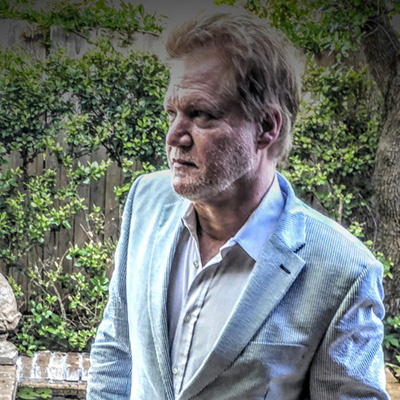
Anthony Kimery, co-founder, CEO, and editor of Inteliscopx.com, is a highly respected and acclaimed multi-award-winning journalist, editor, analyst, speaker, and consultant who has dedicated nearly 40 years of his life to national and homeland security affairs.
Over that time he developed far-reaching, comprehensive historical and institutional knowledge, expertise, and experience in homeland and national security issues, inside and outside of a classified environment.
Kimery was the former Editor-in-Chief and co-founder of Homeland Security Today. He managed the magazine, daily online news operations and wrote the award-winning “Kimery Report,” which covered a broad spectrum of HS-related issues, from public health preparedness to intelligence collection. He also served as Advisory Board Member of Mississippi College’s Center for Counterterrorism Studies.

